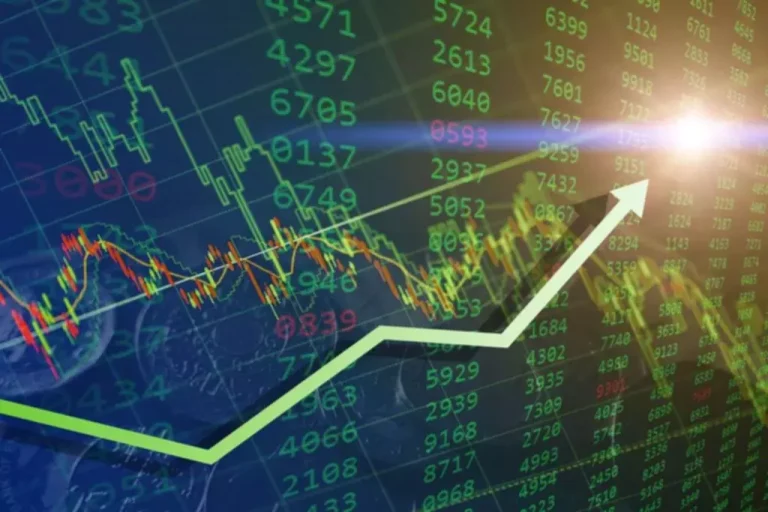Content
An asset around the 70 level is often considered overbought, while an asset at or near 30 is often considered oversold. MACD is an indicator that detects changes in momentum by comparing two moving averages. It can help traders identify possible buy and sell opportunities around support https://www.xcritical.com/ and resistance levels. Technical analysis can be used on any security with historical trading data. This includes stocks, futures, commodities, fixed-income, currencies, and other securities. In this tutorial, we’ll usually analyze stocks in our examples, but keep in mind that these concepts can be applied to any type of security.
What are the best technical indicators?
The Simple Moving Average (SMA) tracks the average closing price of the last number of periods. For example, a 50-day SMA will display the average closing price of 50 trading days, where all of them are given equal weight in the indicator. The concept refers to the price levels that form barriers to an asset price being pushed in a given indicator tools for trading direction. The middle ‘band’ is a 20-period simple moving average with an upper and low ‘band’ that are drawn two standard deviations above and below the 20 MA. This means the more volatile the pair is, the wider the outer bands will become, giving the Bollinger Bands the ability to be used universally across currency pairs no matter how they behave.
Charting on Different Time Frames
Stochastic Oscillator Initial exchange offering offers traders a different approach to calculating price oscillations by tracking how far the current price is from the lowest low of the last X number of periods. This distance is then divided by the difference between the high and low prices during the same number of periods. The line created, %K is then used to create a moving average, %D, that is placed directly on top of the %K.
Technical Indicator: Definition, Analyst Uses, Types and Examples
You should also use technical indicators alongside your own assessment of the movements of an asset’s price over time (the ‘price action’). The most popular exponential moving averages are 12- and 26-day EMAs for short-term averages, whereas the 50- and 200-day EMAs are used as long-term trend indicators. Using data sets of over 100,000 points they demonstrate that trend has an effect that is at least half as important as valuation. The effects of volume and volatility, which are smaller, are also evident and statistically significant. An important aspect of their work involves the nonlinear effect of trend. Positive trends that occur within approximately 3.7 standard deviations have a positive effect.
Market action discounts everything
- The indicator is weighed based on historically-adjusted returns, common sense, an investor’s objective, and logic to evaluate investments and identify trading opportunities.
- Before acting on this material, you should consider whether it is suitable for your particular circumstances and, as necessary, seek professional advice.
- Consequently, Syntax Finance cannot be held responsible for any financial losses or other consequences resulting from your trading or investment activities.
- It’s worth taking some time to discover how each of these important indicators works and how they can be used within your market analysis and trading strategies.
- Based on the premise that all relevant information is already reflected by prices, technical analysts believe it is important to understand what investors think of that information, known and perceived.
- When a doji like this appears after an extended uptrend or downtrend in a market, it is commonly interpreted as signaling a possible market reversal, a trend change to the opposite direction.
These technical indicators measure the rate of price movement, regardless of direction. The stochastic moves up and down relatively quickly as it is rare for the price to make continual highs, keeping the stochastic near 100, or continual lows, keeping the stochastic near zero. Therefore, the stochastic is often used as an overbought and oversold indicator.
A technical indicator is a mathematical pattern derived from historical data used by technical traders or investors to predict future price trends and make trading decisions. It uses a mathematical formula to derive a series of data points from past price, volume, and open interest data. Trading indicators are an important addition to a trader’s arsenal of tools.

Popular Fibonacci levels include 38.2%, 50%, and the 61.8%, all act as magnets and often see price pausing and even reversing at those levels. One thing to keep in mind is that a steady reading above 80 or below 20 indicates a strong trend is in place and a correction may not necessarily take place despite the extreme readings. For example, a stochastic above 50 is seen as positive while a reading below 50 is seen as negative.

The band may expand when volatility increases and will tighten when the price action is relatively calm with small ranges. Standard deviation compares current price movements to historical price movements. Many traders believe that big price moves follow small price moves, and small price moves follow big price moves. Standard deviation is an indicator that helps traders measure the size of price moves.
More experienced traders might find that they don’t require as many indicators, as they are intuitively skilled at reading price action and know which indicators are suitable for their strategy and which are not. The first line is the “tenkan-sen” (base of support), followed by a “kijun-sen” that acts as an extension of resistance to form a trading channel. Below this are two more moving averages – the Ichimoku’s lagging and leading indicators respectively. Standard deviation is a statistical measure of how prices are dispersed around the average price. The greater the standard deviation relative to average volatility in an asset or stock market index, the larger the fluctuations in pricing from day to day (extreme swings). One way trading indicators do work though is through trendlines, which allow traders to see whether an asset is trending upwards or downwards, thus saving them from timing errors with trades.

The candlestick essentially indicates a rejection of the extended push to the downside. Technical traders believe that current or past price action in the market is the most reliable indicator of future price action. Whether using simple or more complex mathematical formulas, technical indicators are usually represented in a graphical form above or below a security’s price chart. Anyone can then compare this indicator with the corresponding price chart of the security. As well as being a trader, Milan writes daily analysis for the Axi community, using his extensive knowledge of financial markets to provide unique insights and commentary. This information is not to be construed as a recommendation; or an offer to buy or sell; or the solicitation of an offer to buy or sell any security, financial product, or instrument; or to participate in any trading strategy.
Systematic trading is most often employed after testing an investment strategy on historic data. Backtesting is most often performed for technical indicators combined with volatility but can be applied to most investment strategies (e.g. fundamental analysis). While traditional backtesting was done by hand, this was usually only performed on human-selected stocks, and was thus prone to prior knowledge in stock selection. With the advent of computers, backtesting can be performed on entire exchanges over decades of historic data in very short amounts of time.
If the MACD is below zero, the MACD crossing below the signal line may provide the signal for a possible short trade. The average directional index is a trend indicator used to measure the strength and momentum of a trend. Similar to OBV, this indicator also accounts for the trading range for the period and where the close is in relation to that range in addition to the closing price of the security for the period.
Traders who think the market is about to make a move often use Fibonacci retracement to confirm this. This is because it helps to identify possible levels of support and resistance, which could indicate an upward or downward trend. Because traders can identify levels of support and resistance with this indicator, it can help them decide where to apply stops and limits, or when to open and close their positions. Bollinger bands are useful for recognising when an asset is trading outside of its usual levels, and are used mostly as a method to predict long-term price movements.
IBKR does not make any representations or warranties concerning the past or future performance of any financial instrument. By posting material on IBKR Campus, IBKR is not representing that any particular financial instrument or trading strategy is appropriate for you. Securities or other financial instruments mentioned in the material posted are not suitable for all investors.
